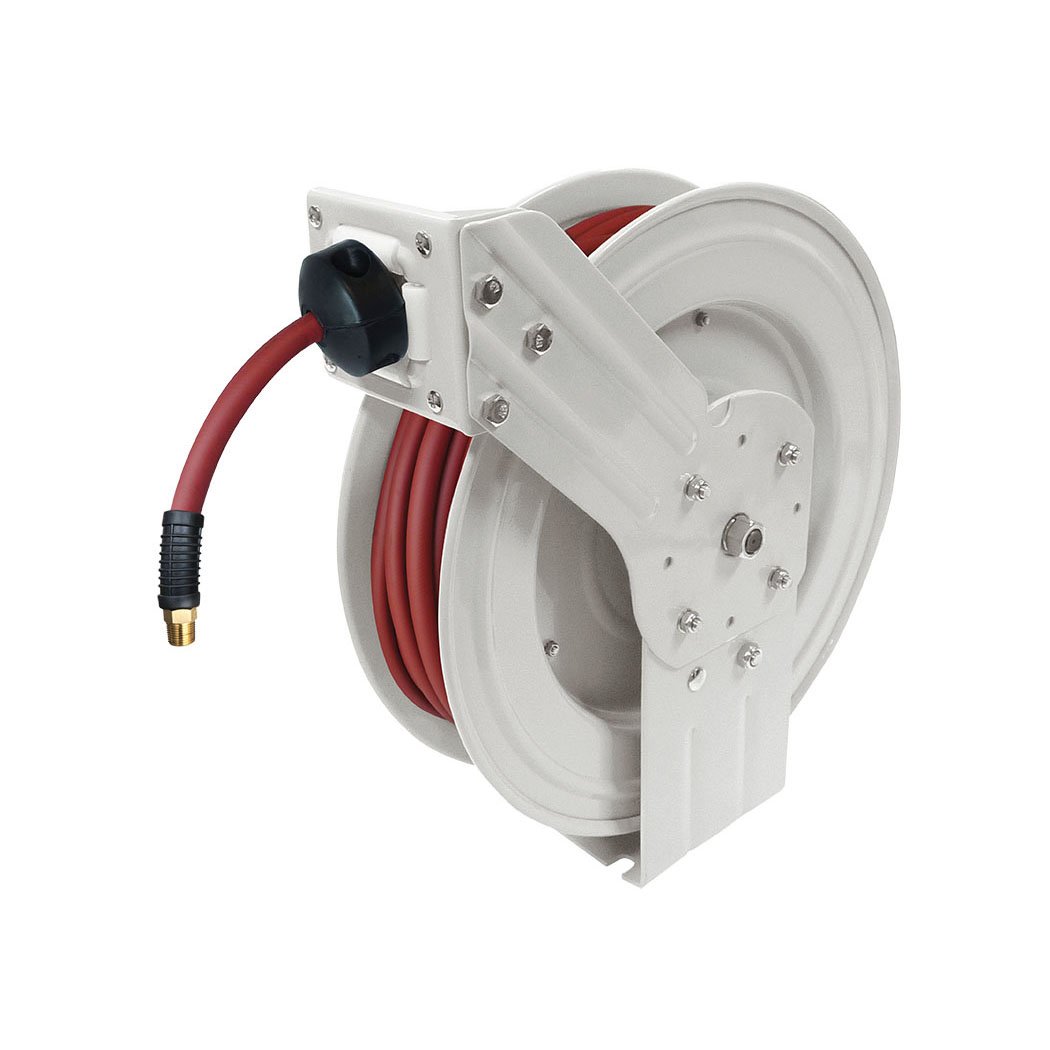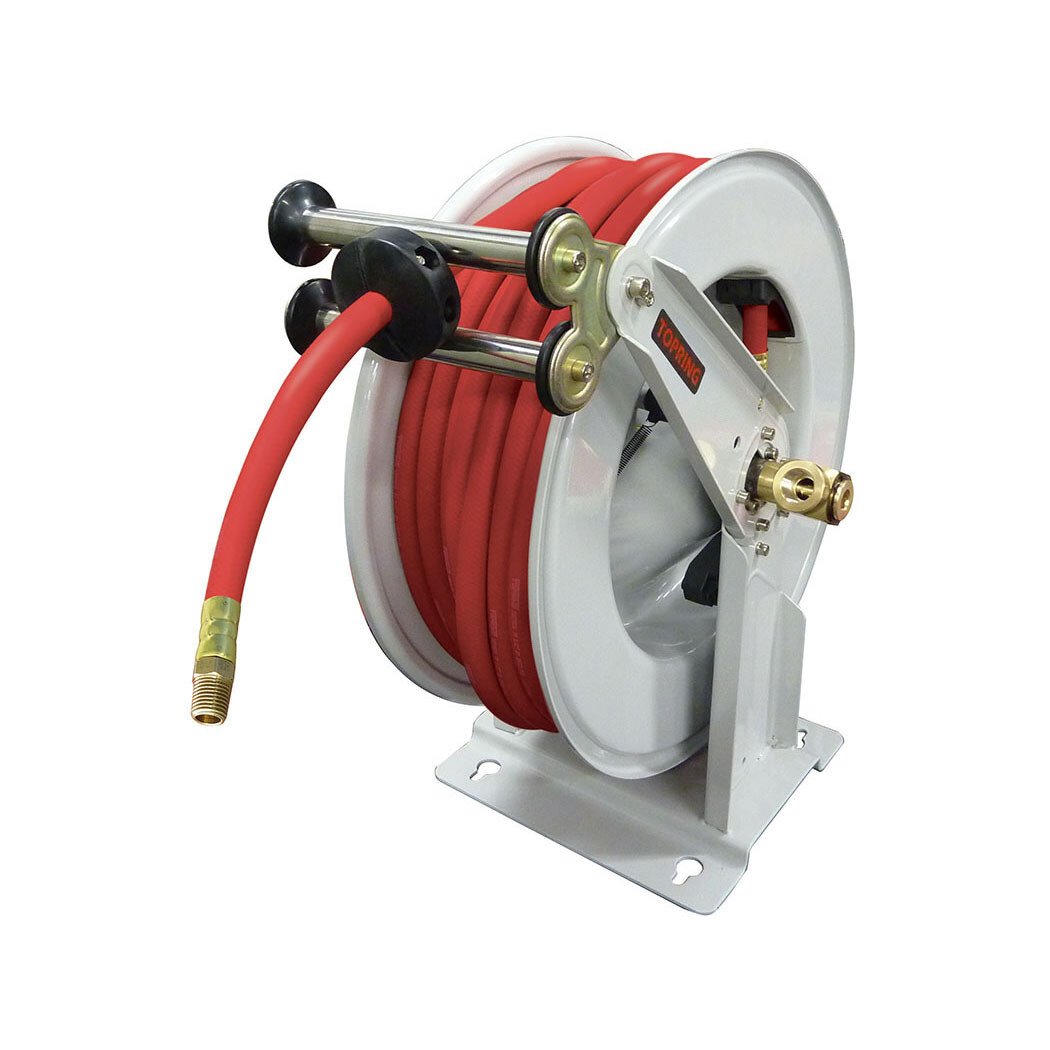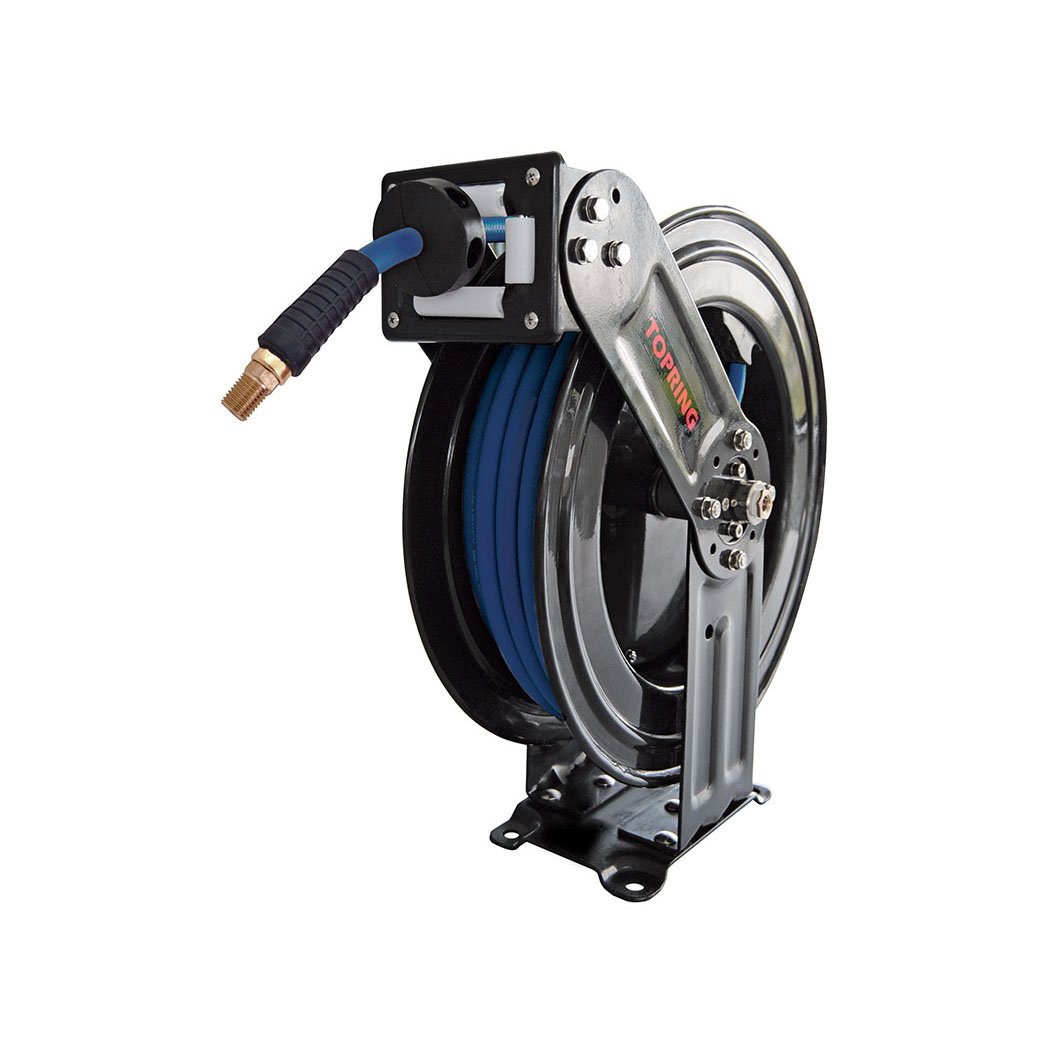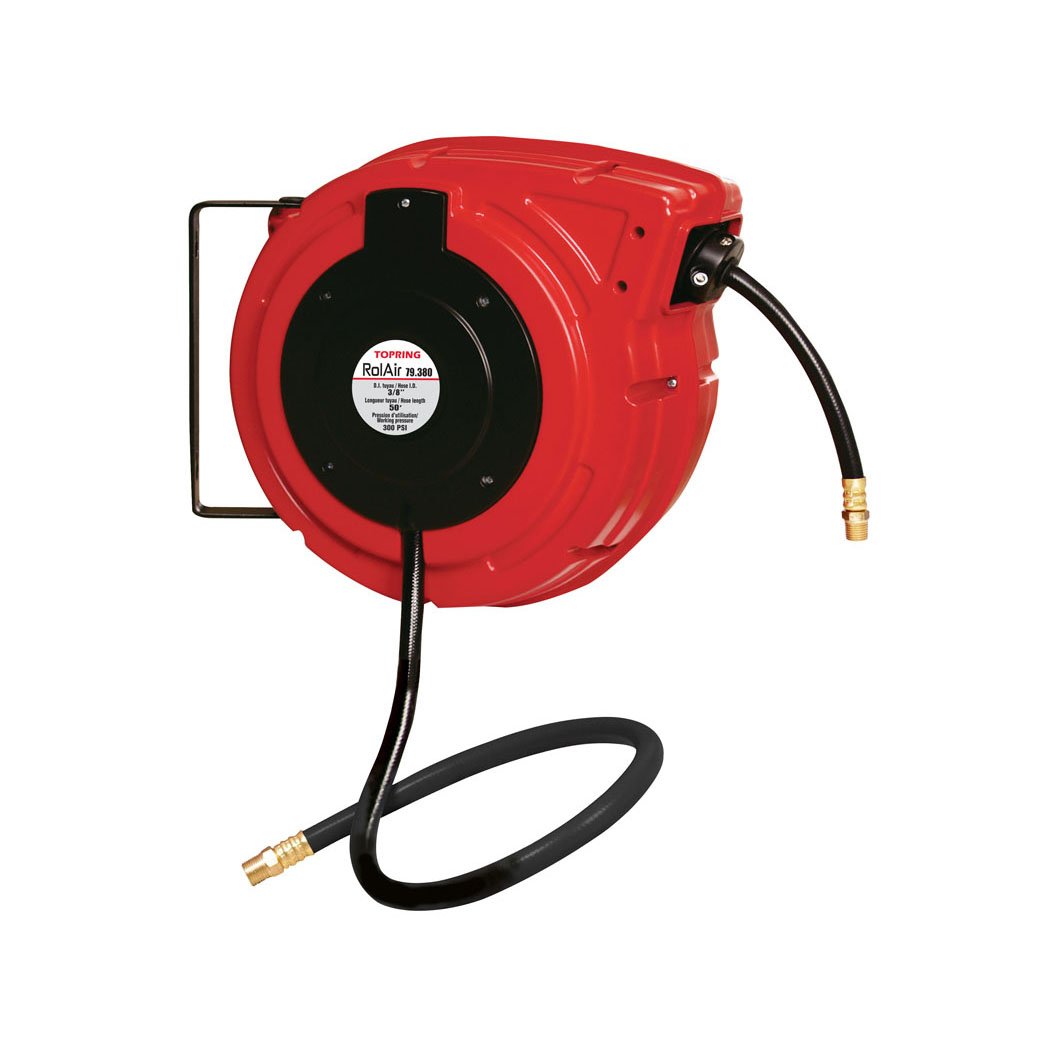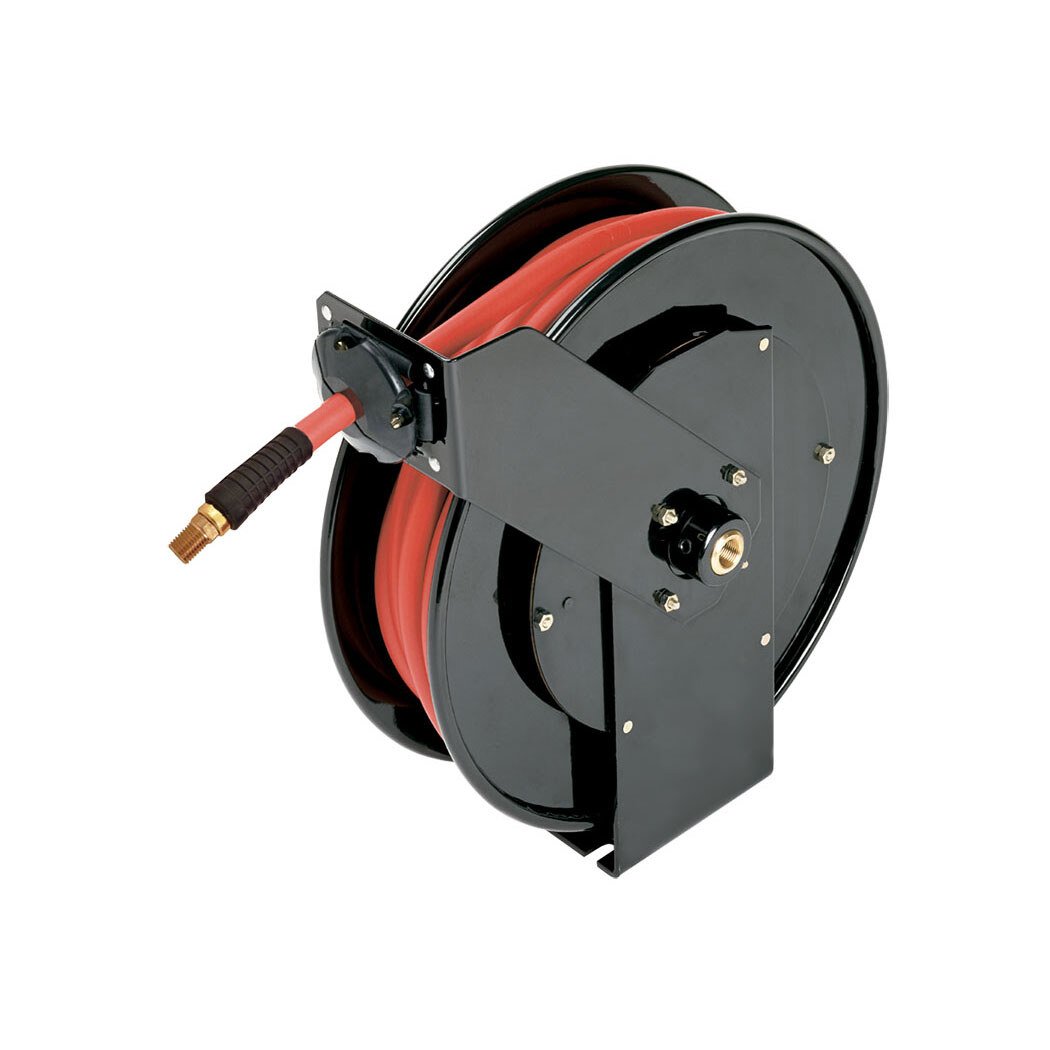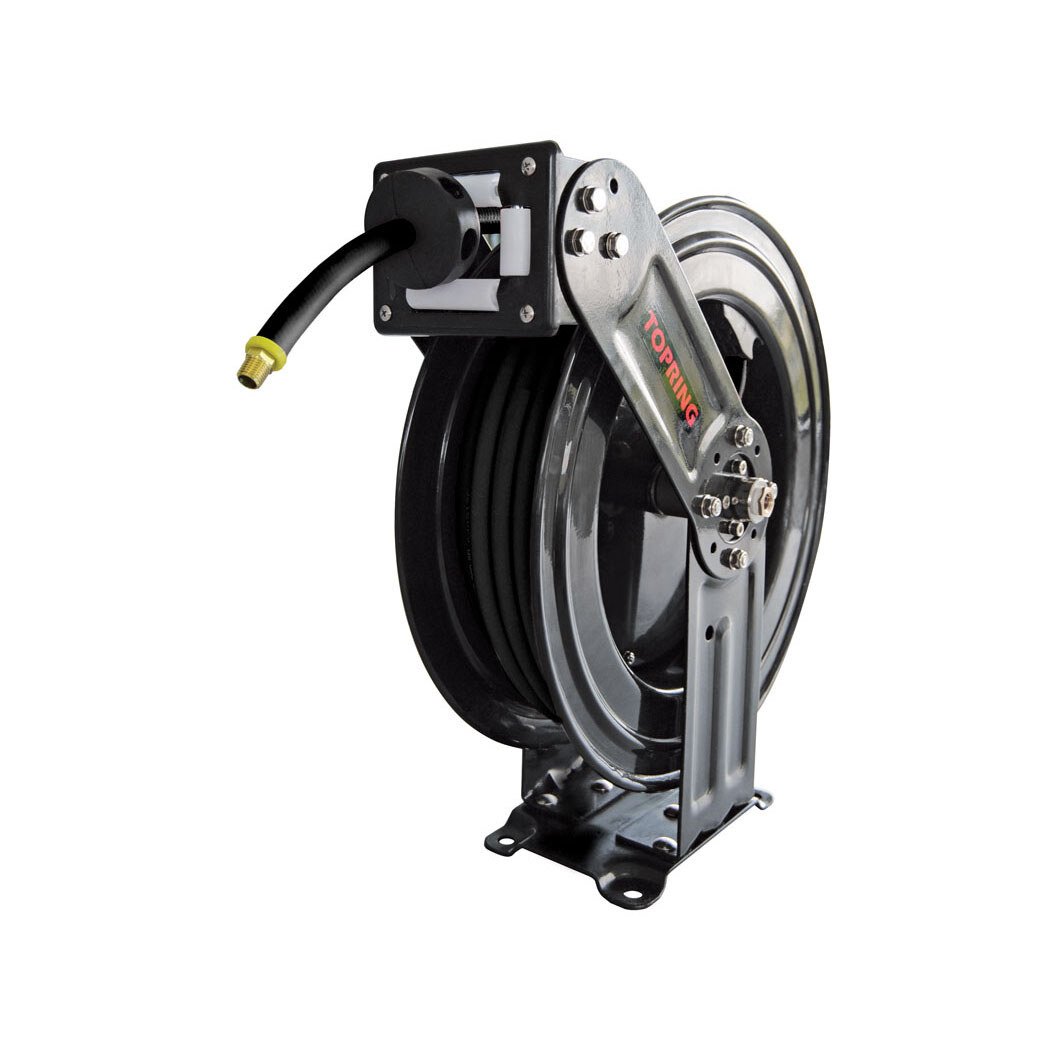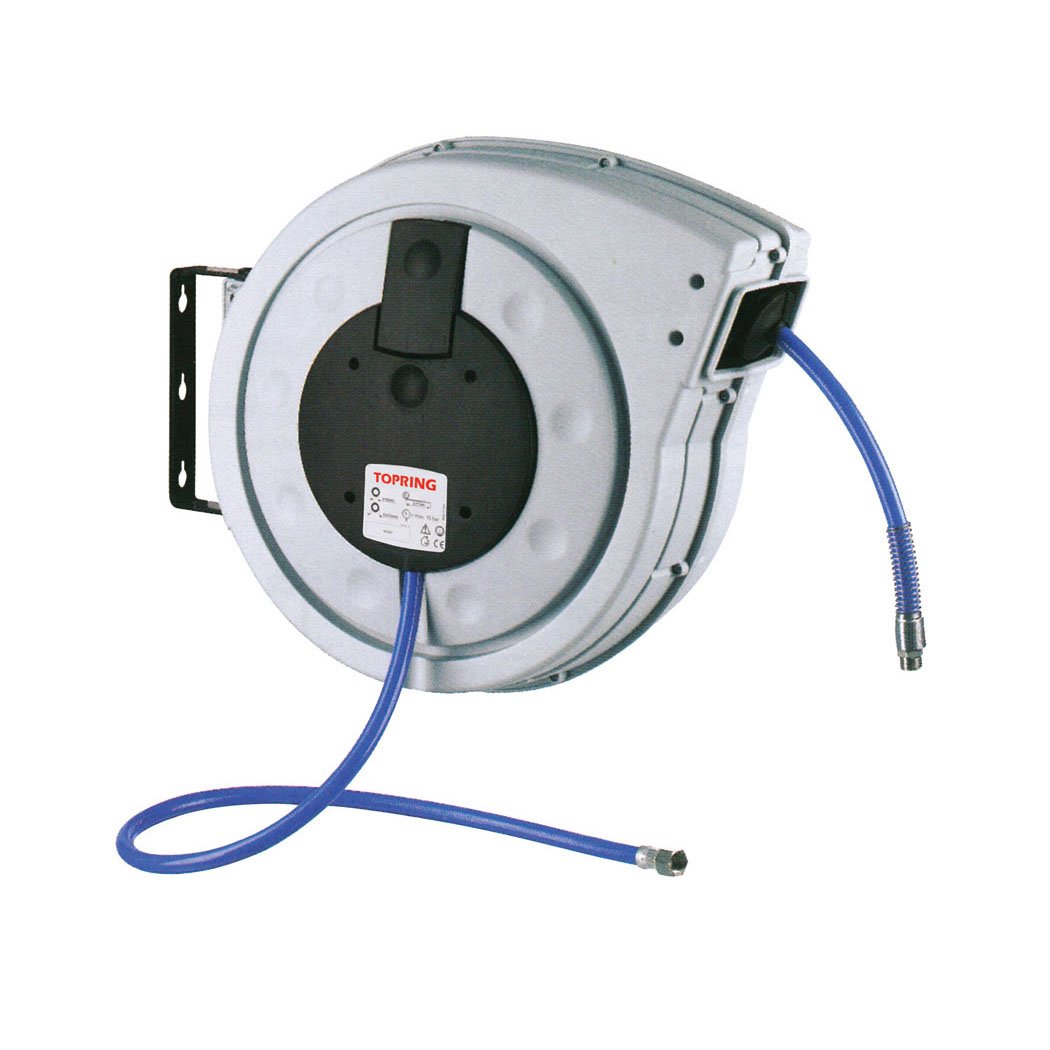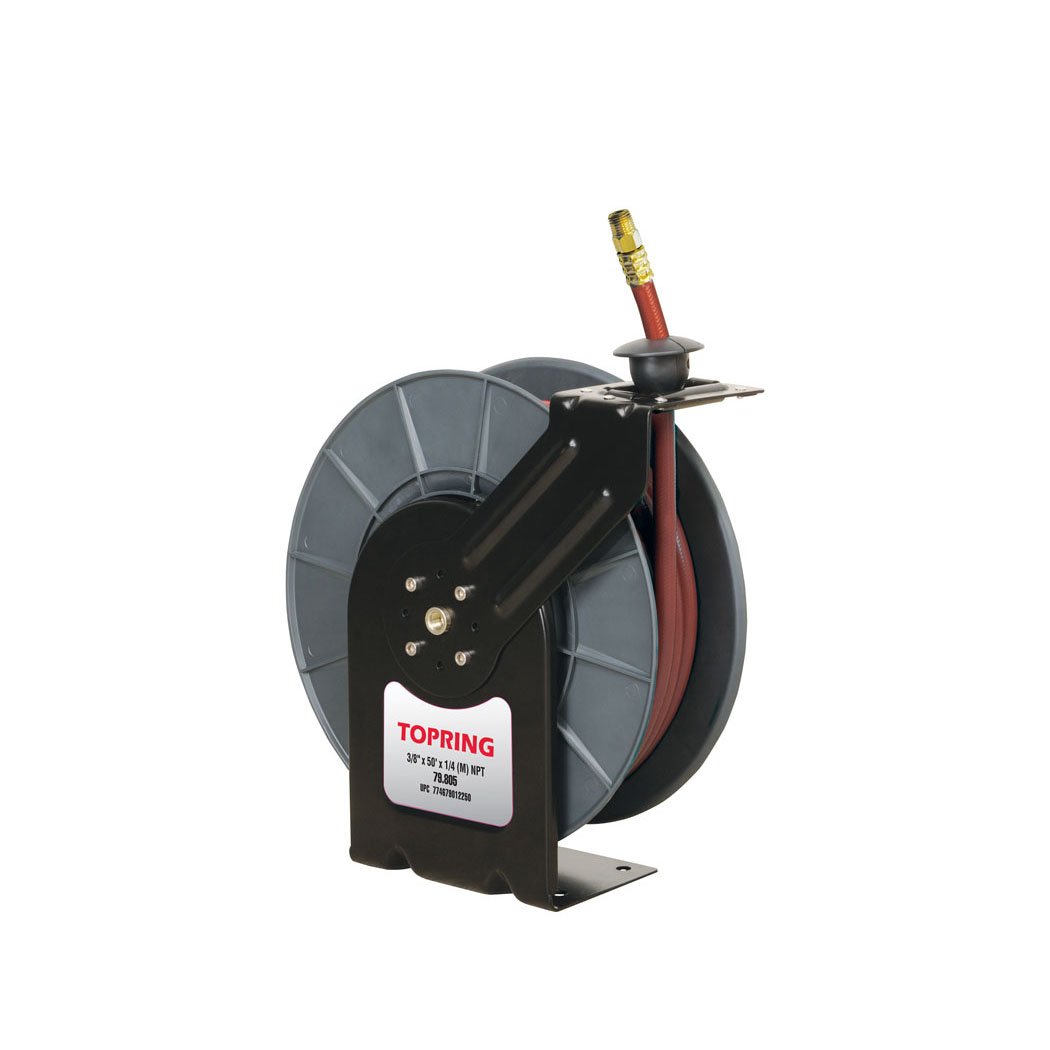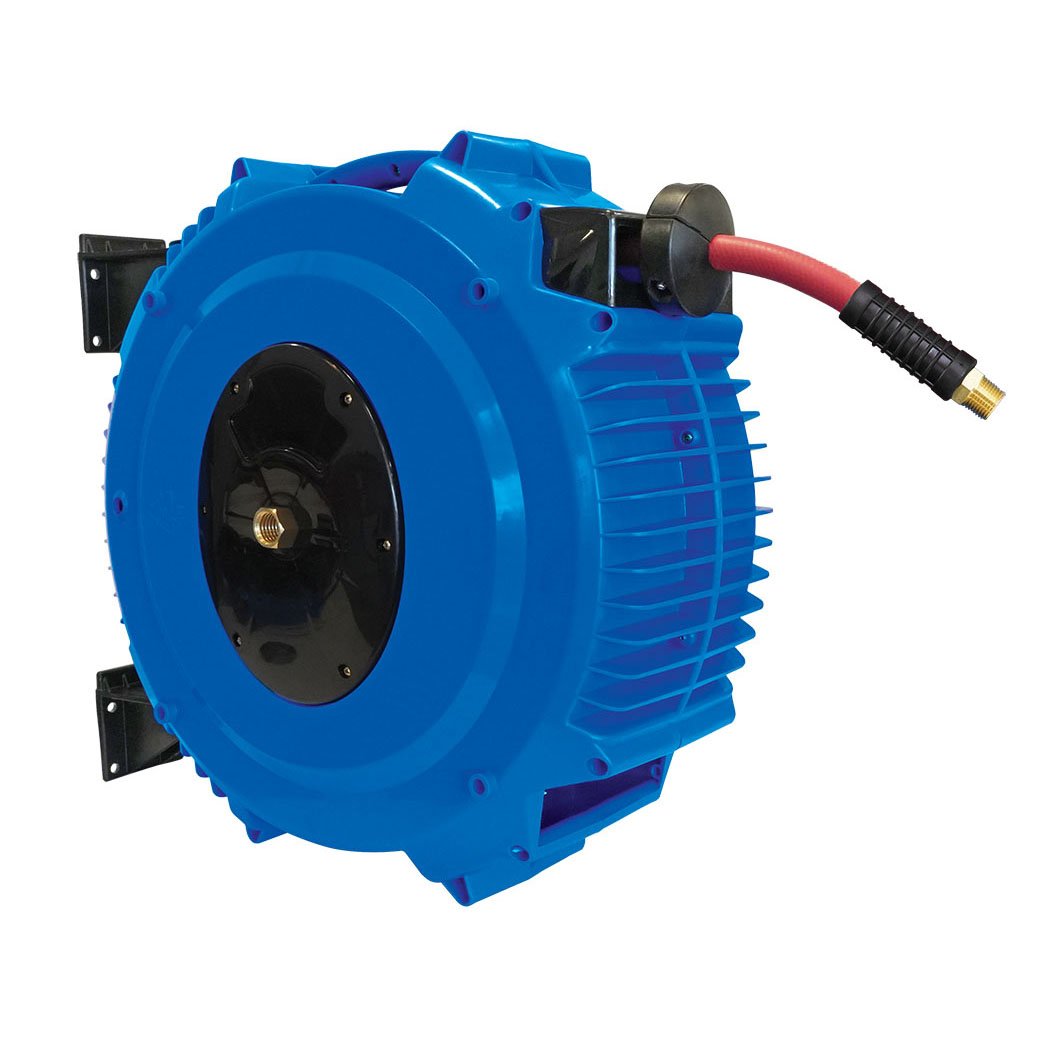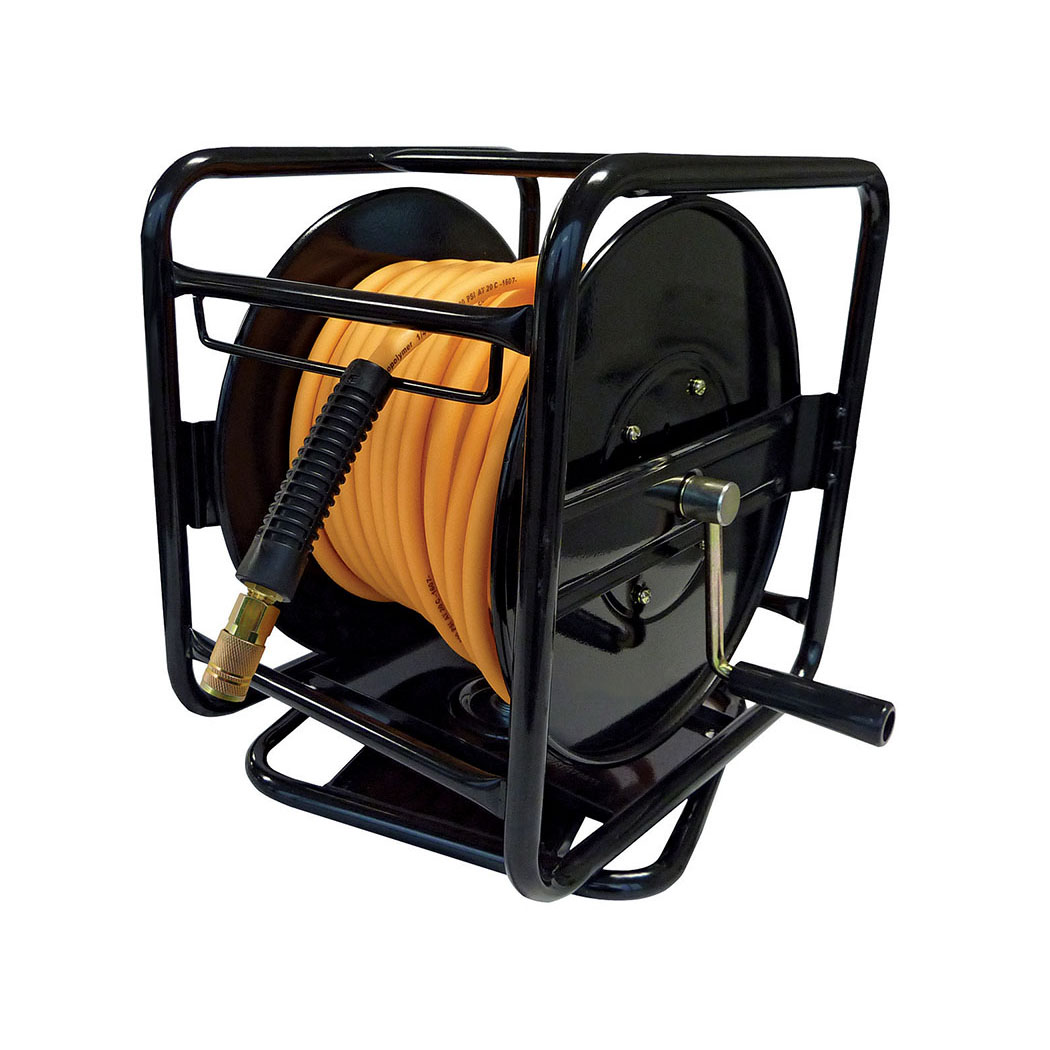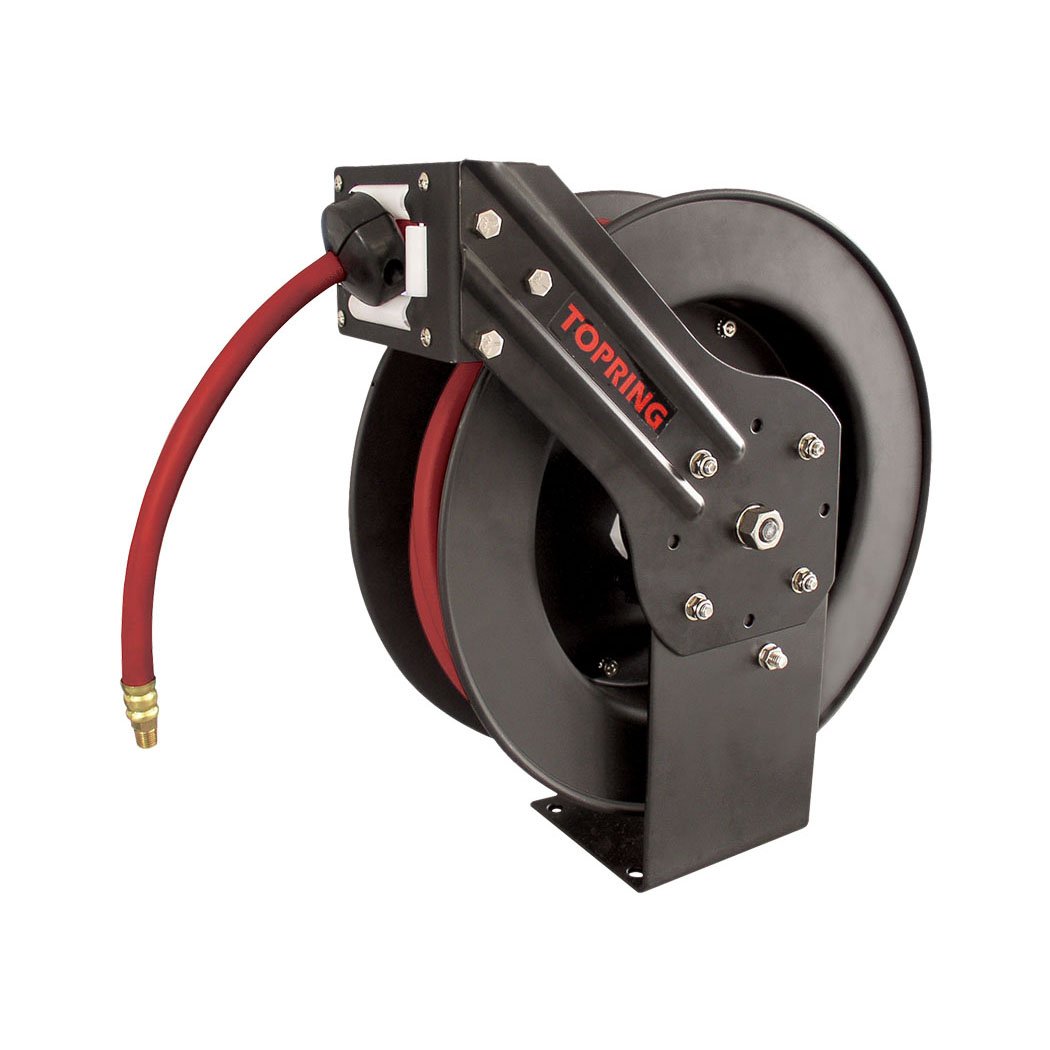Dévidoirs

- …
De la compatibilité à la maintenance : Une approche complète à la sélection des dévidoirs
Le choix d'un dévidoir approprié implique une attention particulière à la compatibilité des tuyaux, aux matériaux, à la conception et à la facilité d'utilisation. En suivant ce guide, vous pourrez prendre une décision éclairée qui répondra à vos besoins et garantira une performance optimale du système d'air comprimé.
Compatibilité avec le diamètre et la longueur du tuyau
Avec un tuyau de longueur et de diamètre appropriés, les dévidoirs offrent une efficacité et une sécurité accrues pour les utilisateurs. On pourrait penser qu'un dévidoir fonctionne avec n'importe quel tuyau, mais l'adaptation de la capacité du dévidoir au tuyau est une étape cruciale qu'il convient de prendre en compte. Un tuyau plus long nécessitera plus de tours autour du dévidoir pour être complètement enroulé, tandis qu'un diamètre plus important réduira le nombre de tours qu'un tuyau peut faire.
Matériau
Les dévidoirs en acier sont robustes et durables. Ils conviennent aux applications industrielles, aux chantiers de construction, à la fabrication et aux environnements commerciaux où la résistance à l'usure est requise.
Les dévidoirs en acier inoxydable sont idéaux pour les environnements où la résistance à la corrosion est cruciale, tels que les applications marines, l'industrie alimentaire, les industries pharmaceutiques et les usines chimiques. L'acier inoxydable est également facile à nettoyer et à entretenir, ce qui le rend adapté aux applications sanitaires.
Les dévidoirs en polymère sont couramment utilisés dans les environnements résidentiels, le jardinage, l'aménagement paysager et les serres. Cependant, ils peuvent également être utilisés pour d'autres applications industrielles et automobiles. Ils sont légers, faciles à manipuler et généralement plus abordables que le métal. Ils sont résistants à la rouille et à la corrosion, ce qui permet de les utiliser à l'extérieur et dans l'eau.
Fréquence, facilité d'utilisation et entretien :
Enfin, il faut tenir compte de la fréquence d'utilisation et de la facilité d'utilisation du dévidoir.
Les dévidoirs rétractables sont pratiques et efficaces, car ils permettent d'étendre et de rétracter le tuyau en douceur, avec un minimum d'effort.
Les dévidoirs manuels peuvent nécessiter plus d'efforts, mais peuvent convenir pour des applications moins fréquentes.
Les options de montage jouent un rôle essentiel dans l'utilisation et la fonctionnalité d'un dévidoir. Les dévidoirs peuvent être montés au mur ou au plafond lorsque l'espace au sol est limité et que l'optimisation de l'espace est une priorité. Le montage au sol offre stabilité et flexibilité, permettant aux enrouleurs d'être placés à différents endroits sans support mural ou au plafond. Il est idéal pour les endroits où le montage au mur ou au plafond n'est pas possible ou lorsque le dévidoir doit être repositionné fréquemment. Les accessoires de montage tels que les supports pivotants permettent au dévidoir de s'aligner sur la direction du tuyau, ce qui permet un déploiement et une rétraction en douceur du tuyau.
Les dévidoirs à un ou deux bras offrent des avantages différents. Les dévidoirs à un bras sont généralement plus légers et il est beaucoup plus facile de régler la tension du tuyau que leurs homologues à deux bras. Si les dévidoirs à 1 bras sont plus économiques, le bras supplémentaire leur confère davantage de stabilité et de durabilité. Les dévidoirs à double bras peuvent supporter des niveaux plus élevés de stress et de tension sans compromettre les performances. Ces dévidoirs répartissent le poids du tuyau de manière plus uniforme, ce qui réduit le risque d'affaissement ou de flexion, en particulier pour les tuyaux plus longs. Ils sont idéaux pour les applications lourdes nécessitant une utilisation fréquente et prolongée du tuyau.
L'entretien des enrouleurs à un bras est plus facile en raison de leur conception simple, de leur poids plus léger et de l'accès plus aisé aux composants. Les tâches d'entretien sont généralement plus simples et moins longues, car il y a moins de pièces mobiles. En revanche, les enrouleurs à deux bras posent des problèmes en raison de leur conception plus complexe, de leur poids plus élevé et du risque accru d'usure des composants. La manœuvre et l'accès aux composants peuvent nécessiter plus d'efforts, et une inspection régulière est cruciale pour traiter l'usure et prévenir les problèmes.


